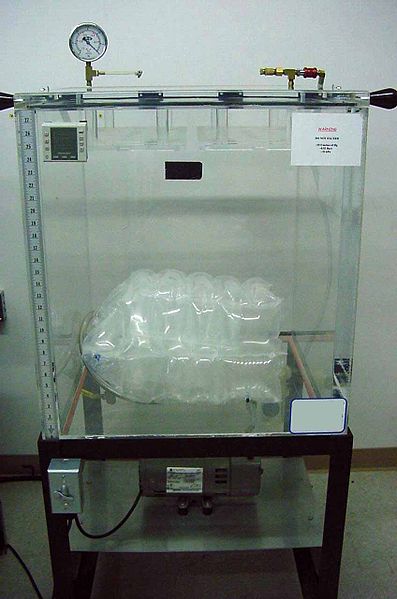A vacuum chamber is a rigid enclosure from which air and other gases are removed by a vacuum pump. This results in a low-pressure environment within the chamber, commonly referred to as a vacuum. A vacuum environment allows researchers to conduct physical experiments or to test mechanical devices which must operate in outer space or for processes such as vacuum drying or vacuum coating. Chambers are typically made of metals which may or may not shield applied external magnetic fields depending on wall thickness, frequency, resistivity, and permeability of the material used. Only some materials are suitable for vacuum use.
A large vacuum chamber.
A small vacuum chamber for studio or lab use in de-airing materials such as mold rubbers and resins.
Vacuum chamber for testing leaks in packaging
A vacuum pump is a type of pump device that draws gas particles from a sealed volume in order to leave behind a partial vacuum. The first vacuum pump was invented in 1650 by Otto von Guericke, and was preceded by the suction pump, which dates to antiquity.
Student of Smolny Institute Catherine Molchanova with vacuum pump, by Dmitry Levitzky, 1776
A cutaway view of a turbomolecular high vacuum pump





